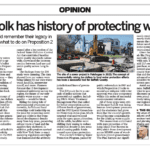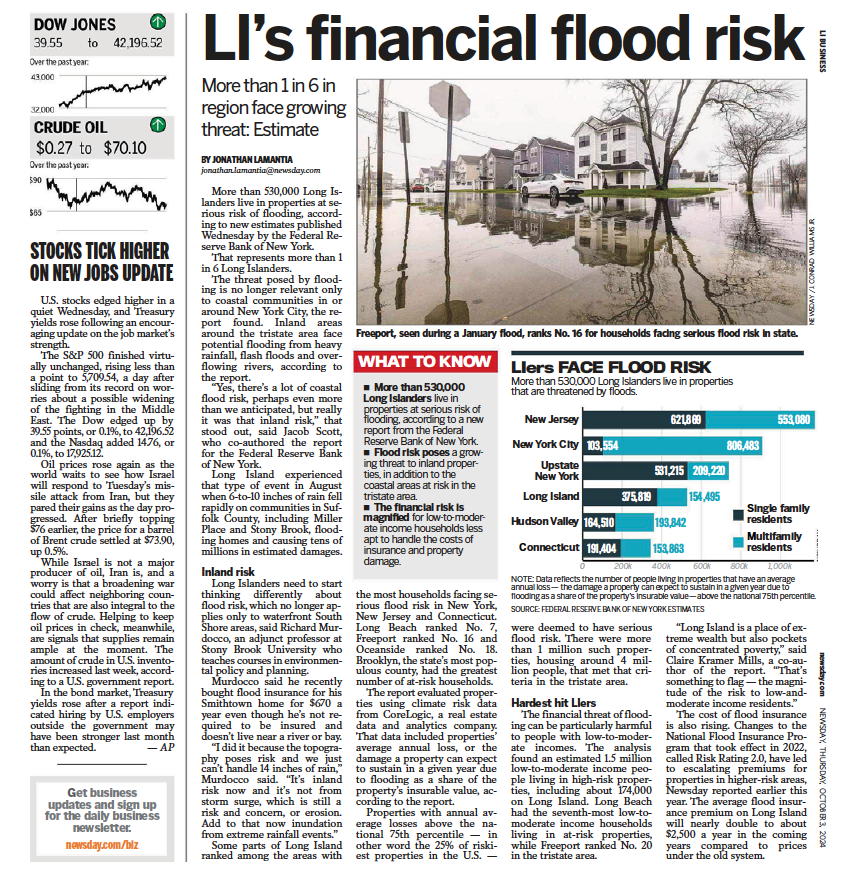The following was an op-ed that was published in Times Beacon Record Newspapers on June 10th, 2010.
Long Islanders are being sold a false bill of goods. We are being promised by each village, town and county “comprehensive” plans that aim to transform suburbia into something that is workable and sustainable. In reality, these proposed plans are fundamentally flawed and shortsighted. The planning process—something that unfortunately many residents and stakeholders don’t understand—should include the public, and always be based upon the best available demographic and scientific data.
The drafting of a comprehensive plan shouldn’t be taken lightly, yet policymakers and local stakeholders have spent enormous sums of public money on plans that haven’t followed the planning process. The resulting “comprehensive plans,” which tout “smart growth,” are more like ideological exercises than true planning endeavors. Problems arise when ideology and rhetoric mix with planning. The end result is that these expensive exercises end up on shelves collecting dust. Furthermore, the public is jaded when it comes to redeveloping Long Island, and with reason: change is often championed in unrealistic ways.
What exactly is “smart growth”? In 2001, Anthony Downs explored this question in the planning journal Foresight: “Throughout the United States, the term ‘smart growth’ is being adopted by groups trying to change what they regard as the undesirable impacts of ‘suburban sprawl.’ Under the umbrella of this appealing term, groups with very different goals are trying to create the appearance of a united front. But in reality, that umbrella is being pulled apart—to the detriment of public policy and the public itself.”[1] There is no consensus for what “smart” growth is, and as a result, Long Islanders are presented unfeasible plans.
The idea of revitalizing Long Island’s downtowns is indeed attractive, but these plans promote flawed ideas. For example, despite the slick presentations of non-profits, the amount of vacant land on Long Island is deceiving. The Regional Plan Association, which is based in Manhattan, and whose planning scope is NYC-centric (“NYC and its environs”), and the Long Island Index both state there is roughly 8,300 acres of “vacant” land available for redevelopment.
Of these 8,300 acres, 52% is land for parking, 22% is unprotected open space, and 26% is “other” vacant land.[2] It must be understood that the 52% (or about 4,316 acres) used for parking is space that shouldn’t be redeveloped. In many areas, parking is a premium asset, especially in the built-to-capacity villages. Each space is worth roughly $150,000 to local businesses, and it’s doubtful commercial land owners will want to compete with residents for these valuable spaces.
There are environmental facts that limit our island’s potential growth, especially our sole-source aquifer. In most cases, “mixed-use” is a euphemism for increased density, which would be detrimental to our limited water supply. Without transferring development rights from one parcel to another, the end result is higher density sprawl.
These massive mixed-use proposals are at densities that fit Manhattan, not Suffolk or Nassau. Nassau has reached its carrying capacity for growth because of our limited water supply. It is good the Lighthouse at the Hempstead Hub wasn’t approved: the aquifer couldn’t handle the growth that development would bring. In Suffolk, the density of the proposed Heartland Town Square exceeds that of the Lighthouse, and the surrounding communities are almost oblivious. It is not mixed-use or clustered growth that is the enemy here, but the way the term “mixed-use” is being twisted and employed.
Other downtowns seek revitalization and growth, but their collective approach is haphazard. It is one thing to draft a comprehensive plan, but it is another to draft a plan that is smart, practical and feasible. The hiring of outside consultants that don’t understand the nuance of Long Island’s politics and stakeholders result in the shelved plans mentioned above. It is frustrating to witness, and as Dr. Lee Koppelman, Long Island’s veteran master planner has said countless times, “They don’t have the foggiest idea!” He’s right. We, as Long Islanders, deserve better.










couldn’t agree more